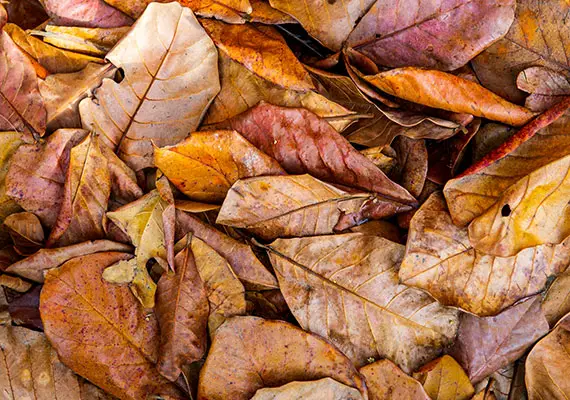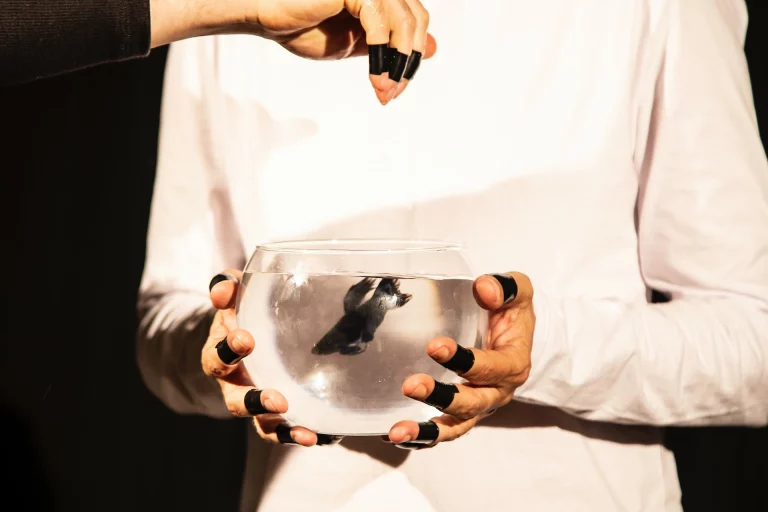What Are Indian Almond Leaves? And Why Should You Use Them? (Catappa Leaves)
Keeping an aquarium filled with various fish and animals is more than just adding food pellets and calling it a day. There are several things we can do to improve the quality and the parameters of the water to keep your fish happier and feel like they are living more in their natural habitat.
This means replicating the aquarium to the natural environment that the fish originates from. This will reduce the stress on the fish and also help it live healthier for longer.
Indian Almond Leaves are proven to be essential for the aquarium, especially black water tropical aquariums. It helps replicates the natural water parameters of the fish.
INDIAN ALMOND LEAVES
These leaves tend to grow on Terminalia Catappa trees derived from the leadwood tree family. These leaves are native to Australia, Asia, Madagascar, and the Pacific as a whole. Most fish-keepers like us, use these leaves for ‘Various’ reasons most important being to lower the pH level in the water and the additional antifungal and antibacterial properties within the water as a whole. This water is most suitable for your ‘Shrimps and Betta Fish.
NEED FOR INDIAN ALMOND LEAVES
Lowering the pH level
Indian Almond Leaves can be considered a natural method for lowering the pH level of your tank. Depending on the fish species that you keep, the pH in the water has to be kept within a specific range in order to keep your fish healthy and happy. This can be done efficiently with the help of Indian almond leaves.
Maintaining a balanced water parameter is essential as it could accept your fish in a lethal manner. Indian Almond Leaves will help you maintain a balanced pH level within your tank and assist in creating a suitable environment for your fish.
If you use soft water, Indian Almond leaves can lower the pH up to 6, if you’re using hard water then the pH can reduce up to 5. Also, this is directly dependent on how much water is in your tank, and how many leaves you put in it. These are average measurements as each water conditions are different.
How do Indian Almond Leaves lower pH?
As the almond leaves are soaked in the water, they start to decay due to the presence of bacteria in the tank water. This process releases natural chemicals from the leaves into the water and lower the overall pH of the water, these natural chemicals are known as ‘tannins’ and give the water a darker tone.
These tannins are what makes it healthy for the fish as it replicates the natural river waters of South America and Asia, where most of these fish are from. In nature, the rivers will be filled with plant material and other organic matter, which decompose and release tannins, and we are trying to replicate this in our aquarium.
Can we use any other leaves other than Indian Almond Leaves?
I’ll be lying if I say no, but Indian Almond leaves are your safest bet. Because they have been used time and time again and release the right amount of tannins and do not contain any harmful compounds in the leaves. You could experiment but risk killing your fish, all of them! Some leaves can contain compounds that might be naturally occurring in them but poisonous to your fish, even if they are not poisonous to humans. But however, leaves like Indian Almond leaves, Beech Leaves, Banana leaves, and Oak Tree Leaves can be used as well. We suggest sticking to Indian Almond leaves as they have been proven to be much more effective compared to other leaves in keeping your fish healthy without causing any harm to them, thousands of times. Don’t believe us? Just ask any hobbyist you know, and they will tell you the same.
Note: Always make sure that you add some Indian almond leaves to your aquarium as it helps in creating a faster water cycle and lowering the pH level in the water as a whole.

Reduces Stress
Indian almond leaves dramatically reduce the stress level among the fishes by creating a natural river ambience and tannins. Stressed fishes tend to have a weaker immune system and are more likely to fall sick. Thus, Indian almond leaves help in improving fish’s response to infections and bacteria as a whole.
Indian almond leaves give out dark-brownish tannins that help in creating a better dark and natural ambience that will make the fish feel more secure and have more hiding space from bigger predators or simply the ‘Tank Viewers’.
It just simply makes them feel safe and secure as a whole.
Creating Blackwater Environment
Indian almond leaves can be used in order to be able to create a blackwater tank. Make sure to boil the leaves before adding them to your tank and then add the water and the leaves into the aquarium. Once you add the Indian almond leaves, it starts to give out tannins in a span of 3-4 days after you add them to your aquarium. The tannins add a brownish colour to water which is considered the blackwater aquarium. Adding extra Indian almond leaves will not have a negative impact on your aquarium, but it will simply reduce the pH scale of the water and create a more suitable environment for the animals and the fish in the tank.

Breeding
The Indian almond leaves create a dark environment in the aquarium which makes the fish and shrimp feel ‘more secure and safe for themselves to reproduce and to keep their ‘eggs and frys’ safe as well.
The fish feel exposed to predators when they are kept under ‘Artificial Aquarium Light’ and in captivity. Thus, adding Indian almond leaves will reduce the light penetration and is simply ‘Great for Fish breeding’.
The combination of ‘Low pH scale and dark environment’ in your aquarium is perfect for a ‘Successful Fish Breeding’ for most varieties of tank mates including ‘Betta Fish, Cherry Shrimp, Guppy Fish, Mexican Crayfish, and many other freshwater fish.
Contains Antifungal and Antibacterial Properties
The ‘No.1’ reason for you to add Indian almond leaves is because of their Antifungal and antibacterial properties. It is a natural remedy for fish and shrimp diseases. Most low-grade infections and illnesses including ‘Fin-rot’ can be cured through the anti-bacterial properties of the Indian almond leaves.
Therefore, make sure you add Indian almond leaves to your Nano tanks or aquariums at least during the starting stage when you add fish to your aquarium as it could prevent any fungal infections and illnesses affecting your other fish and tank mates.
Source of Food for Shrimps
If you have ‘Freshwater Shrimps’ in your aquarium, they will definitely love it. Cherry shrimps and other freshwater shrimps love picking up on Indian almond leaves. Once the leaves begin to decompose, you will see how the fishes get attracted to them.
Once the decomposing starts, you will see that the shrimps will not leave the spot until the entire leaf is decomposed.
Protection for Frys and small fishes
Catappa leaves or Indian almond leaves create a natural hideout for the small fish, fry, and baby shrimps from bigger predators. I have always seen my fry and baby shrimps hide under the Indian almond leaves.
Indian almond leaves are also great for infusoria, which are small organisms not seen to the naked eyes that are very nutritious for the fish fry.
Use as substrate
Yep! You can use Indian almond leaves as a substrate for your aquarium. It is called leaf litter substrate. You need to dry the leaves out completely before adding them to your nano tank or aquarium. Leaf substrate is easier to maintain than sand and gravel. In addition, it creates a healthy lifestyle for the baby shrimp and small fry.
Slow Decomposition of the Leaves
Indian almond leaves are very slow in the decomposition of their fibres and will not immediately decompose in the tank. This creates a longer period of food source and allows us to reap the benefits of the Indian almond leaves for an extended period of time.
How to prepare Indian almond leaves for your aquarium
Make sure you prepare the Indian almond leaves before adding them to your aquarium in order to avoid any unnecessary germs and bacteria to enter into your tank. Wash the leaves under tap water before boiling them in a vessel filled with water and Indian almond leaves.
Once the tannins are released from the leaves, remove the leaves and filter out the water under a strainer just for precaution. Make sure you wait till the vessel is back to room temperature before any further process.
Then you can try these leaves or simply add them to your aquarium along with the water that was used to boil the Indian almond leaves. For a more detailed idea on “how to make blackwater extract” – Click Here.
When to add the Indian almond Leaves to the Aquarium
Indian almond leaves can be added into the tank once the aquascape is set up and the plants are added into the tank and filled with water. We need to understand that making use of ‘Indian almond leaves’ is not a luxury or a decoration for the tank, it is a basic necessity in order to maintain the parameters in the tank and create a healthy environment for the fish and the shrimps to breed and survive. It will reduce the pH scale in the water making the water more suitable for most of the freshwater fish and tank-mates in the aquarium.
This article was written with the knowledge I gained from my experience in Fish Keeping. However, I have listed below the literature which I have gained my knowledge from as well as referred to support my ideas. Resources – • Impact of Indian almond leaves on aquarium water quality • Addition of different concentrations of Indian almond (Terminalia catappa) leaf extract to aquarium water resulted in improved water quality and increased bubble nest formation by male Siamese fighting fish (Betta splendens) without having any consistent negative effects on growth metrics and blood chemistry • IMPROVEMENT OF WATER QUALITY AND BREEDING




